Fairview Bridge and Tunnel
July 2023 Fairview Lift Bridge & Tunnel, Fairview, MT #42-2023
SNAPSHOTSBYWAYS
AL
8/5/2023
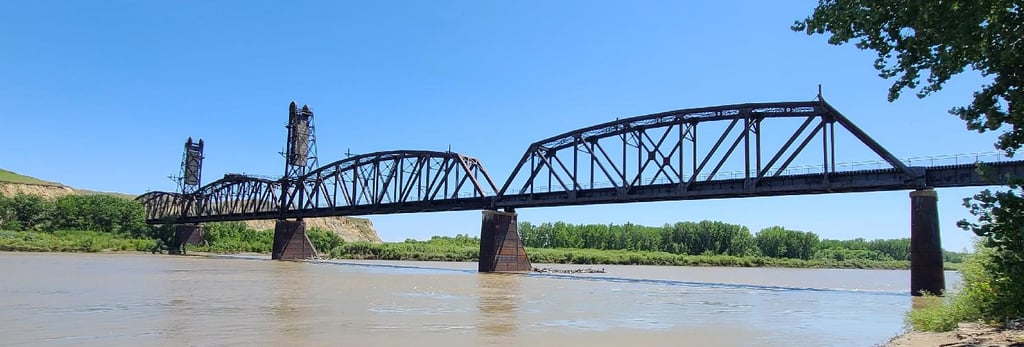

We took time for a stop at the Fairview Lift Bridge and Tunnel, which is in North Dakota, but almost right on the border. The bridge and tunnel were built in 1912-1913 to carry the railroad over the Yellowstone River, and have the distinction of being the only lift span bridge, and the only railroad tunnel in North Dakota. Railroad traffic used the bridge until 1986 and it now serves as a one mile trail from the Sundheim Park on the west side of the river to the neighborhoods east of the tunnel.
We parked in Sundheim Park under the bridge in a large gravel area, that is large enough to handle any size motorhome, and made our way up the embankment to where the railroad tracks would have been. We stopped along the way to read the markers that detailed their construction and history. Tom noted that a movie poster was taped to the signboard for the bridge, and after some web searching, it turns out it is a new movie just released on March 24, 2023. It is called End of the Rope, and some of the scenes were filmed here at the bridge and tunnel. It is based on the true story of the 1931 Charles Bannon murders and lynching in a small town in North Dakota. Not my type of movie, so I don’t think I will be watching it, but it is an interesting footnote for this place.
We continued to make our way to the bridge. It is a magnificent structure with its high-arching trusses, long spans, and rusty metal finish. The lift towers soar over the spans increasing its impact. As we cross the bridge, the massive concrete counterweights come into view above our heads. The interlocking detail of blocks that make up the weight catches my eye. The bridge crossing surface is still the railroad timbers, but thankfully they have added a wire mesh walking surface so there is less worry about falling through. Suki did not like the feel of the surface and Cassie’s feet would have fallen right through, so they received rides most of the way across and back. In a few spots, where the timbers are spaced further apart, you had to wonder a little as the wire mesh sagged a little more under your footstep.
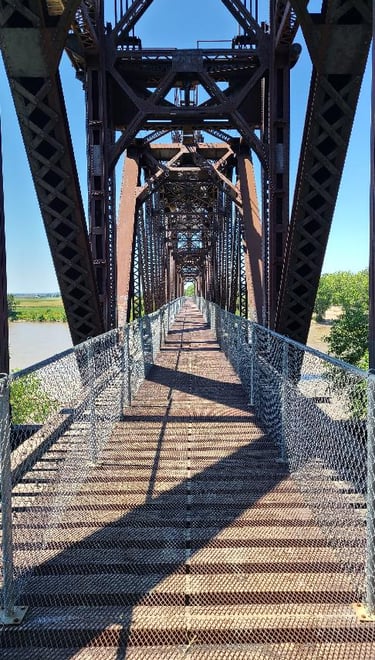

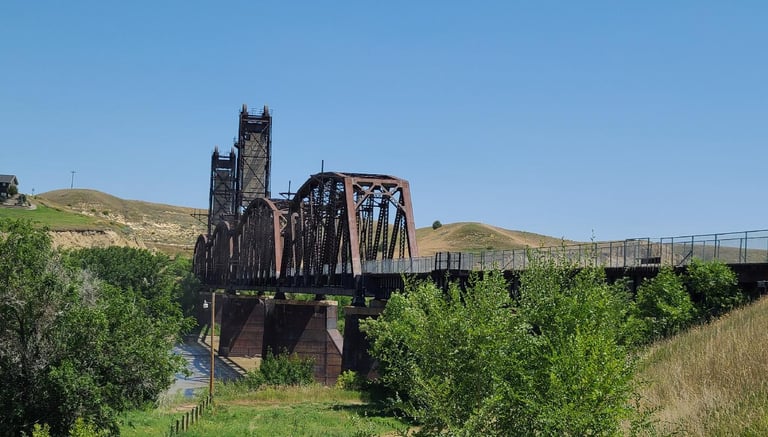

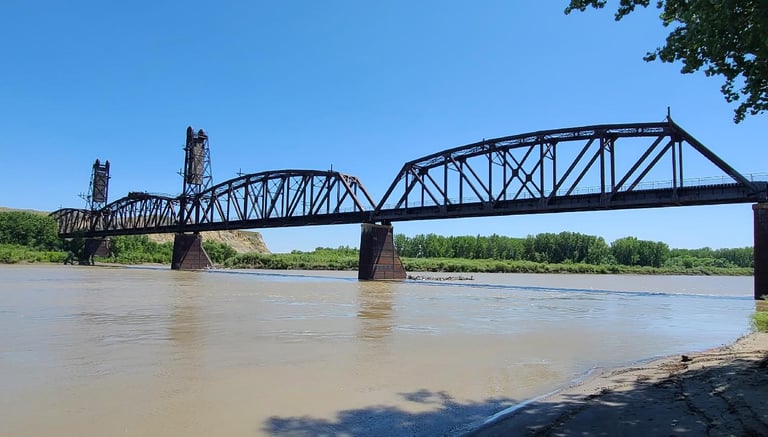

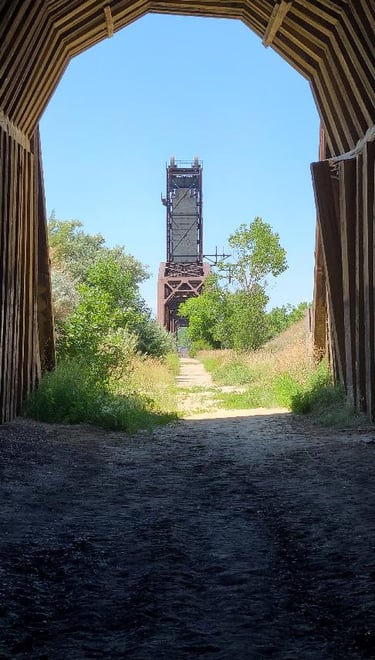

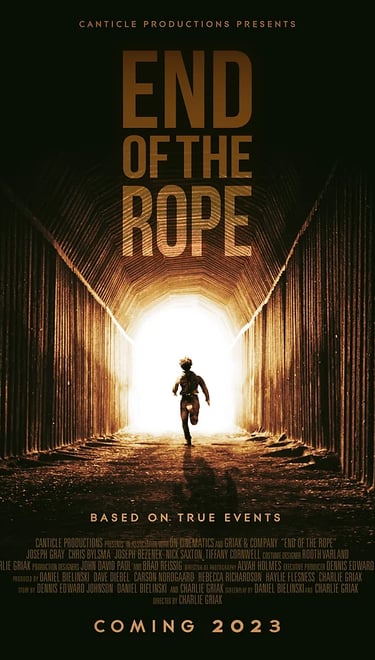

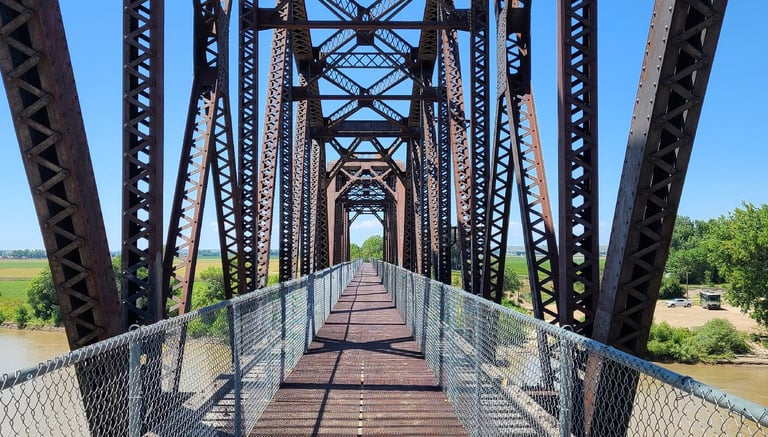


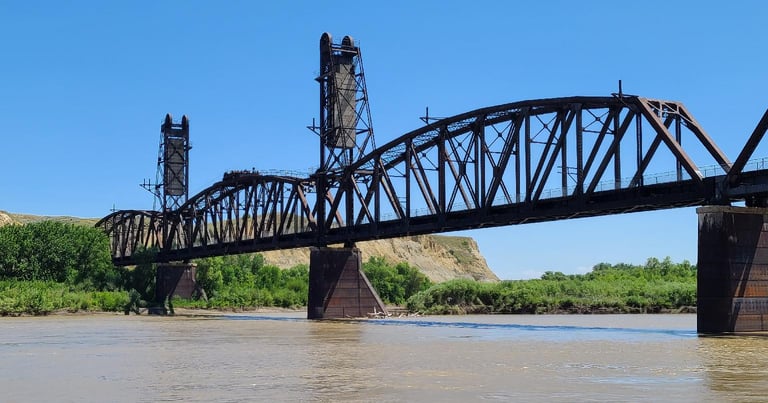
After crossing the bridge, the tunnel is only a few hundred feet down the trail. Crossing the entrance to the tunnel the temperature cools and you are quickly surrounded by the darkness within. The cooler air felt good in the tunnel, but the mosquitoes that went with it were not. They were large and fierce in their drive for our blood. The bridge and park were seemingly free of the little monsters, so we had no thought of needing bug spray. Once we entered the tunnel though, the battle was on. We might have taken more time to take a closer look at things, but if you stopped, their ferocious attacks would chase us away, with Tom vowing “no more tunnels (without bug spray)!”
The tunnel is 1456 feet long, framed in timber, and built on a curve, so you cannot see from one end to the other. Thankfully Tom saw the sign to bring a flashlight, which saved us from walking in complete darkness. Unfortunately, the east end of the tunnel is starting to show its age and the timbers are starting to collapse. Hopefully they have a plan to stabilize and restore this. Also, the trees around the east end of the bridge and at both entrances to the tunnels could use a good trimming, since they are getting a little overgrown, encroaching on the pathway. The tunnel was constructed mostly with hand labor, with two crews working 12 hour shifts each, and it only took 11 months to complete.
Both the Missouri and Yellowstone rivers are considered navigable and had steamboat traffic on them, which required the bridge to be at least 80 feet above the normal water level. The only way to do this, given the terrain, was to build a lift bridge and tunnel. By a strange twist of fate, steamboat traffic stopped going up the Yellowstone River about the same time as the bridge and tunnel were finished, so the lift mechanism was only used once in a test run, and never again. Interestingly, they modified the bridge so that is could carry both rail and automobile traffic across the river. This shared use continued until a new bridge for the highway was built in 1955.
I like finding places like this: kind of out of the way and combining history, unique structures, a little hiking. The engineer in me hopes we discover many more to explore and share, but without the dastardly mosquitos.
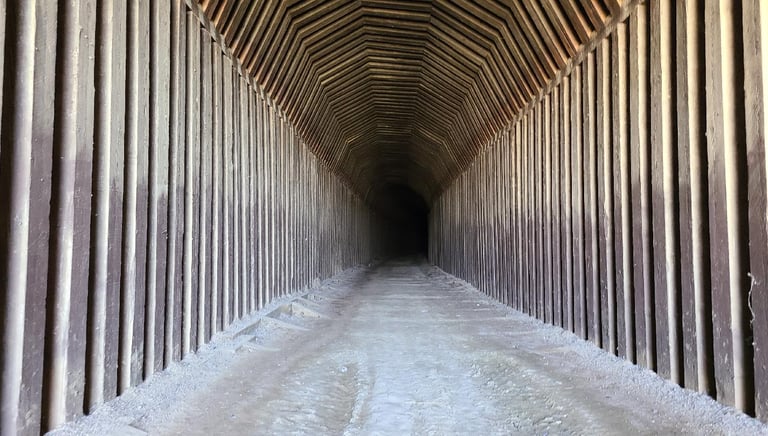

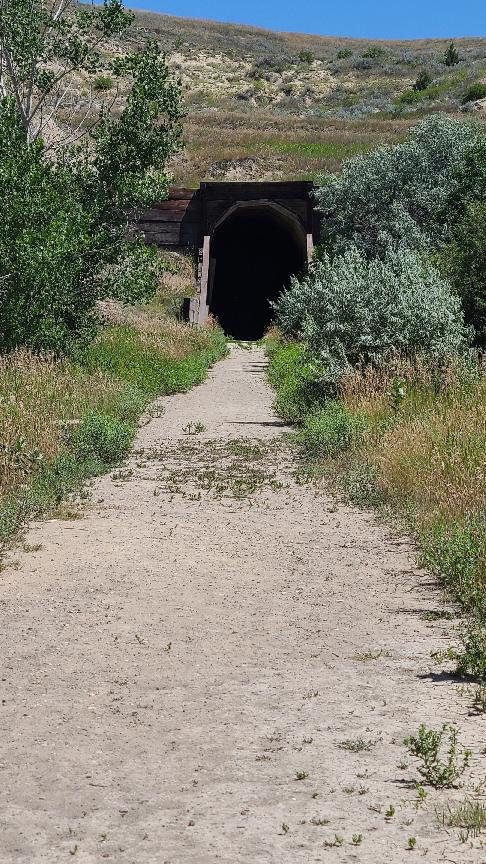

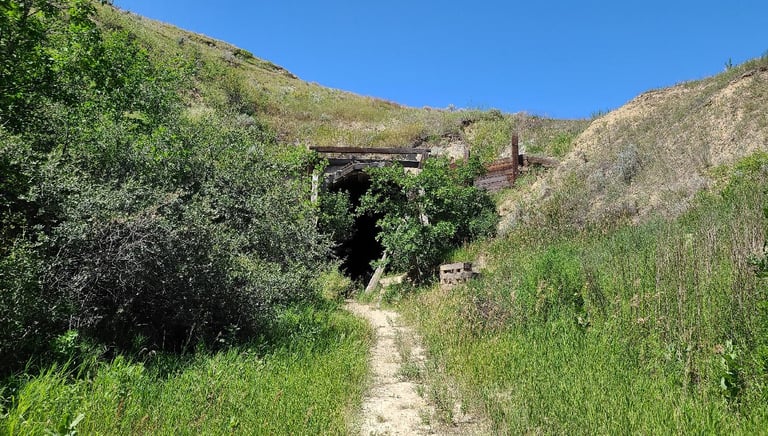

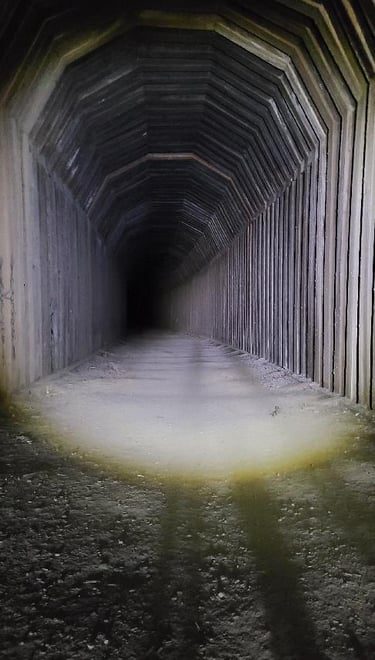

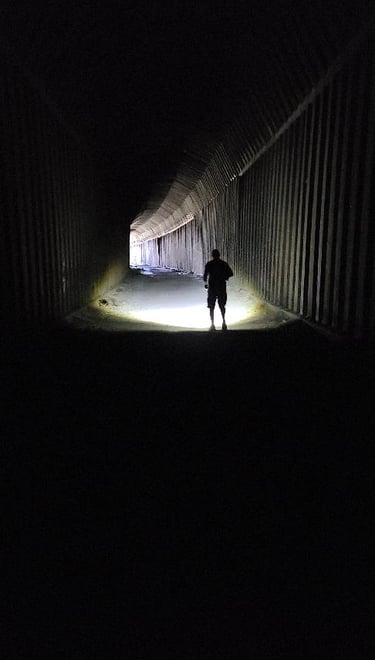

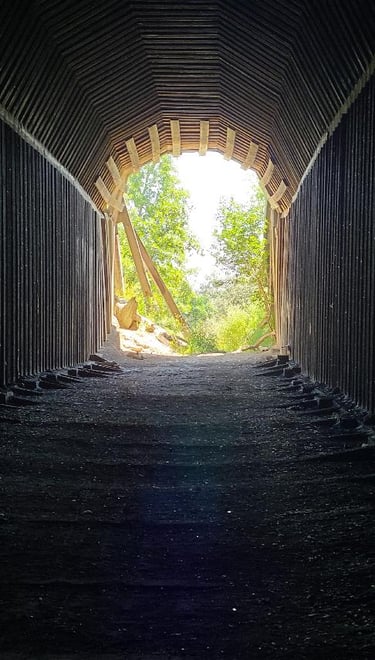

Share your comments on Facebook or email us at roadfronts@gmail.com
Subscribe for monthly updates
Current location:
